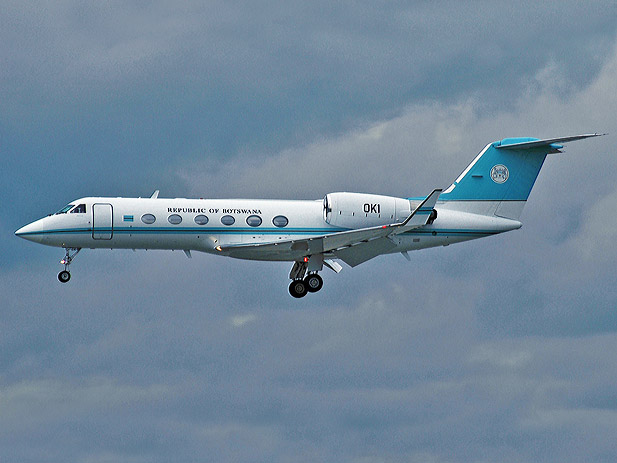|
|
|
TOTAL CATEGORY : 10 |
 |
|
|
GALLERY:
1
|
GALLERY IMAGE : 1 |
|

BDF Gulfstream IV
Gulfstream IV/G400/G450
The Gulfstream IV (or G-IV) and derivatives are a family of private jet aircraft produced by Gulfstream Aerospace, a General Dynamics company based in Savannah, Georgia, United States. The G-IV was later remarketed as the G300 and refined as the G350. The Gulfstream IV-SP is a longer-ranged variant. It was relabeled as the G400, and subsequently refined into the G450. The C-20G Gulfstream IV is the military variant.
History
The Gulfstream G400 was formerly marketed as the Gulfstream IV-SP. It has a large cabin, long range of 4,350 nautical miles (8,060 km) and the same comfort and design that characterize the G series. Typical cruise height and speed are 45,000 ft and Mach 0.88. It costs about $36 million at 2004 prices (leasing is also an option). The replacement for this jet, the G450, has better performance and comes with Honeywell's next generation Primus Epic Avionic Suite, a Honeywell Visual Guidance System (an advanced HUD), the Gulfstream Enhanced Vision System (EVS) and Goodrich Electronic Standy Instruments.
The military variant of the IV, designated C-20G Gulfstream IV in Department of Defense service, may be configured for cargo operations, passenger operations or combinations of the two. With passengers seats removed, it may be modified to the following configurations: three pallets/no passengers, two pallets/eight passengers, and one pallet/fourteen passengers. With a full complement of seats installed, the aircraft is capable of accommodating up to twenty-six passengers and a crew of four. A hydraulically-operated cargo door is installed on the starboard side of the aircraft, and a ball roller cargo floor is capable of accommodating palletized cargo. C-20G aircraft are operated Fleet Logistics Support Squadron Four Eight (VR-48) and Marine Air Support Detachment (MASD) at Naval Air Facility, Andrews Air Force Base, Washington, DC and at Fleet Logistics Support Wing Detachment, Marine Corps Base Hawaii.
National Oceanic and Atmospheric Administration (NOAA) operates a IV-SP modified to fly scientists and crew members at 45,000 feet around the tropical cyclone environment. The purpose of which is to drop many instruments called "dropsondes" to measure the windspeed, barometric pressure, humidity, and temperature as they fall to the surface of the ocean. By sampling the tropical cyclone environment with these dropsondes over a 4,000 mile track around the active hurricane, the forecasters at NOAA's National Hurricane Center and Hurricane Research Division can better predict where the hurricane will be "steered" by the upper level winds. They can also predict wind shear that will either increase or decrease a hurricane's strength. For the current mission, the G-IV SP performs flawlessly since it is capable of relatively quick speeds and can fly long distances with ample cabin space for the crew and instruments.
In 1990, Gulfstream CEO Allen E. Paulson and a Gulfstream flight crew set 35 international records for around-the-world flight in a Gulfstream IV.
Operators
- Military operators include Botswana, Egypt, Ireland, Ivory Coast, Japan, Netherlands, Sweden, Turkey, Pakistan, United States Department of Defense and constituent armed services.
- NOAA operates a single IV-SP.
Specifications (G-IV)
General characteristics
- Crew: two pilots
- Capacity: up to 19 passengers
- Length: 88 ft 4 in (26.92 m)
- Wingspan: 77 ft 10 in (23.72 m)
- Height: 24 ft 5 in (7.45 m)
- Wing area: 950 ft² (88.3 m²)
- Empty weight: 35,500 lb (16,100 kg)
- Max takeoff weight: 73,200 lb (33,200 kg)
- Powerplant: 2× Rolls-Royce Tay Mk.618 turbofans, 13,850 lbf (61.6 kN) each
Performance
- Maximum speed: 459 knots (527 mph, 850 km/h)
- Cruise speed: 459 knots (527 mph, 850 km/h)
- Range: 4,872 miles (7,815 km)
- Service ceiling: 45,000 ft (13,716 m)
- Rate of climb: 4,000 ft/min (1,220 m/min)
- Wing loading: lb/ft² (kg/m²)
Source : Wikipedia
|
|
|